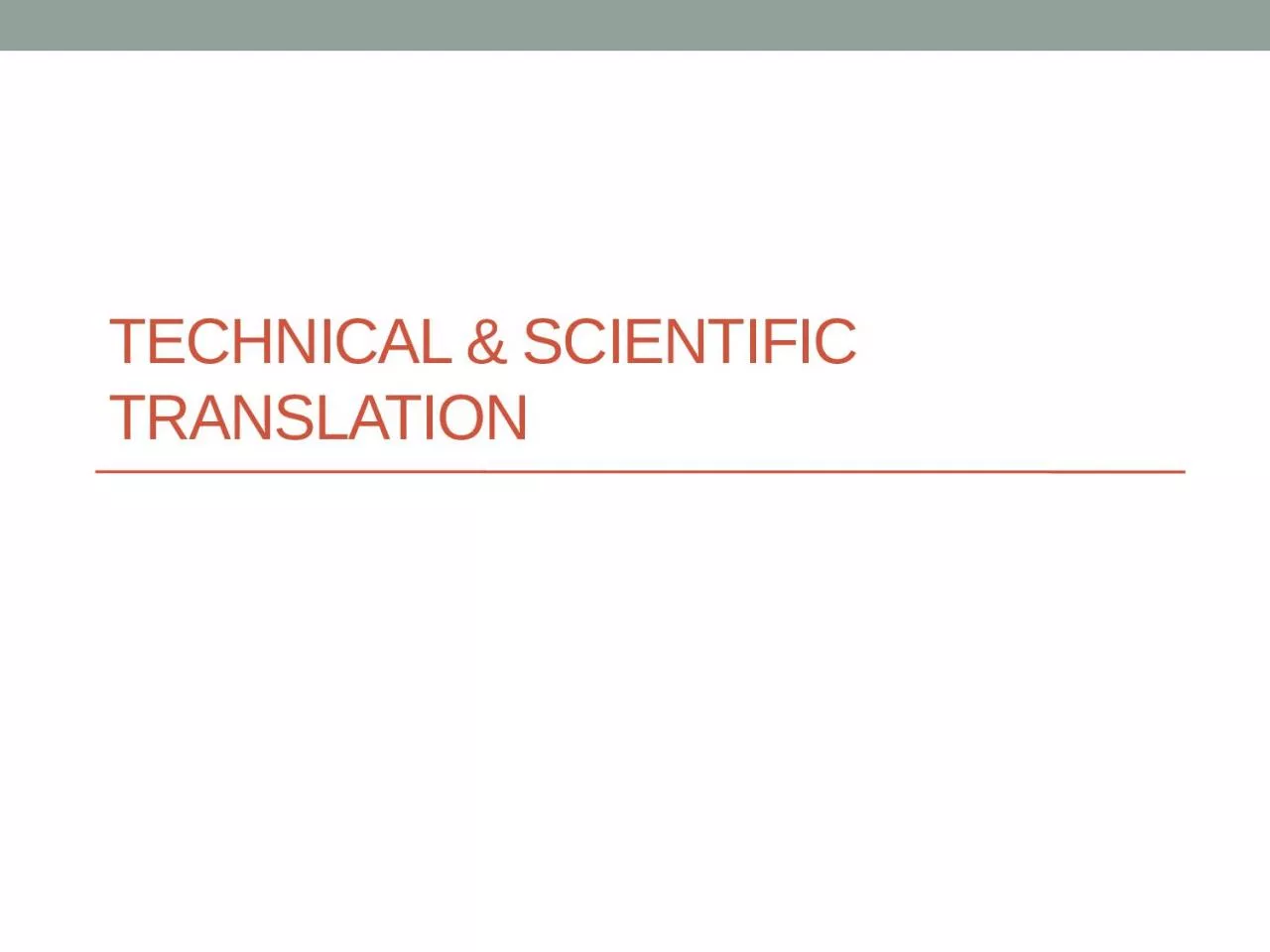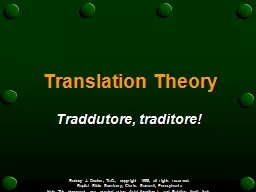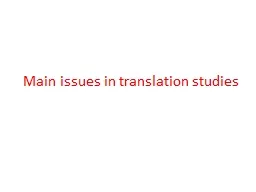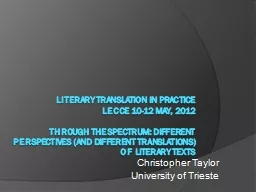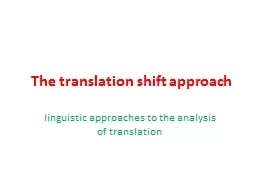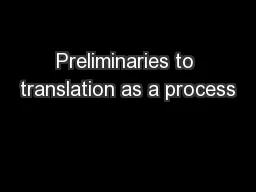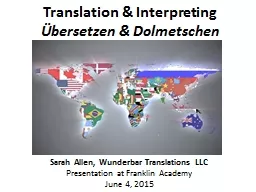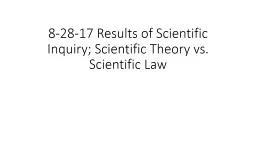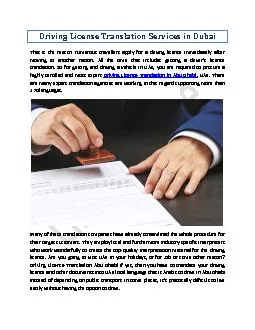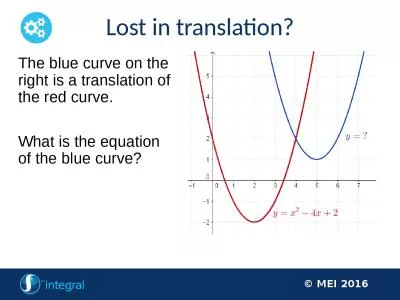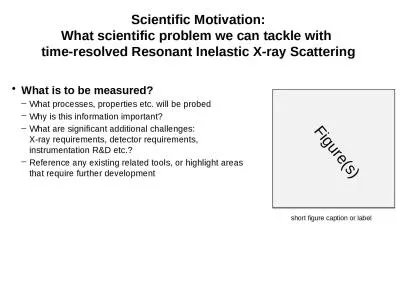PPT-Technical & scientific translation
Author : davis | Published Date : 2023-06-24
General Introduction Scientific translation is not like other translations it goes beyond just rendering words from one language into another It is rather considered
Presentation Embed Code
Download Presentation
Download Presentation The PPT/PDF document "Technical & scientific translation" is the property of its rightful owner. Permission is granted to download and print the materials on this website for personal, non-commercial use only, and to display it on your personal computer provided you do not modify the materials and that you retain all copyright notices contained in the materials. By downloading content from our website, you accept the terms of this agreement.
Technical & scientific translation: Transcript
Download Rules Of Document
"Technical & scientific translation"The content belongs to its owner. You may download and print it for personal use, without modification, and keep all copyright notices. By downloading, you agree to these terms.
Related Documents

